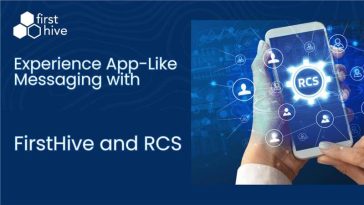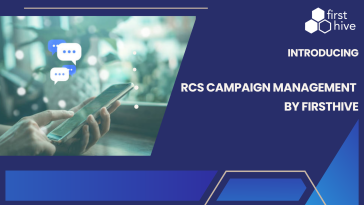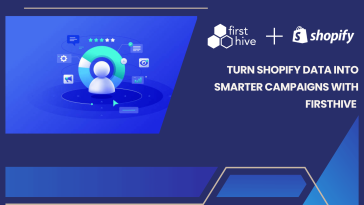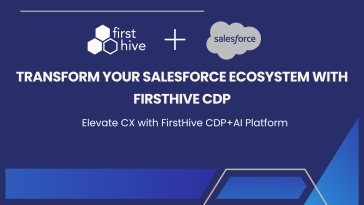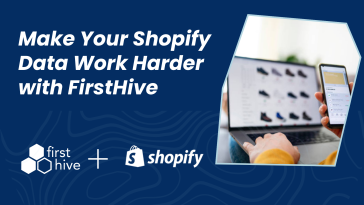As a buyer, how do you feel when the brand talks to you like a stranger on different channels? Though you have interacted many times with the same brand, they don’t seem to know you enough.
If you are a brand selling products and doing the same thing with your customers, they would also feel equally disoriented and disinterested in interacting with your brand. Research by Forbes confirms that, “87% of customers who say they had a great experience will make another purchase from the company”.
Customer Delight driven by unified customer profiles is what can be achieved by a Customer Data Platform. This has a direct impact on the bottom line. Over time, marketers, data teams, and those interacting with customers feel the deep need to onboard a Customer Data Platform into the Technology Stack.
“I was super excited about our 25th-anniversary celebrations. My wife and I divided the long invitee list by preference and started sending e-invites and phone messages. After a few messages, two of my friends who also are my wife’s friends sent me a response. It was embarrassing to read it. ‘We already received it from Tara. Thank You.’ It was a tongue-in-the-cheek instance.”
If simple event invitee lists can cause frustration and embarrassment, then it is bound to happen with large customer databases that multiply information each day. To eliminate these mishaps and do a lot more, Customer Data Platforms are coming to the rescue of a marketer, getting indispensable by each day!
According to Gartner, A CDP is a marketing system that unifies a company’s customer data from marketing and other channels to enable customer modeling and optimize the timing and targeting of messages and offers. Customer data platforms have evolved from a variety of mature markets, including multichannel campaign management, tag management and data integration [1].
While this statement provides an introduction to the definition of a Customer Data Platform (CDP), the scope and capabilities of a CDP are evolving multi-fold. It is emerging into being the central brain of all marketing systems of intelligence.
Thus, making it difficult to define something that is evolving. To make it simple, we have created a list of attributes and principles that would help you understand more about a CDP.
- What is a Customer Data Platform (CDP)?
- Capabilities of a Customer Data Platform
- Benefits of a Customer Data Platform
- How is a Customer Data Platform Being Used? How does it work for your sector?
This is fast complementing CRMs, ERPs, DMPs, and other large enterprise tools that are coined to capture any kind of customer impulse or audience data.
So, What is a Customer Data Platform (CDP)?
A CDP is an identity discovery solution that works as a centralized system of intelligence at the middle of the MarTech Stack. This has become a marketer’s single platform that creates unique, unified customer identities across all marketing channels and sources of customer interactions.
It empowers and automates omnichannel campaign management, segments customer cohorts, provides insights and targeted recommendations that lead to increased marketing efficiency.

What Exactly is a CDP Capable of Doing?
With the evolving nature of CDPs, the tool has challenged itself with better and new-age relevant capabilities. As the term seems obvious, a CDP is capable of managing your data from across multiple sources of marketing information and interactions. This includes both internal and external data systems and interfaces such as CRM, ERM, DMP, social media, email, ad campaigns, voice conversations, chatbots, and more. Apart from these basic essentials, a CDP can so a lot more.
Capabilities of a Customer Data Platform
Unified & Unique Customer Identities
Data flows in into your enterprise databases from all directions. But, they are stacked in silos. Duplication, missing information, limited processing abilities, abrupt process handovers, and so on are consequences of a poorly managed and disintegrated data system. A CDP draws customer data from across different sources, assimilates it, stores and archives it for immediate consumption of team members and subsequent processes. During this cycle, a CDP applies uniquification to create unique and unified customer identities with probabilistic data enrichment.

Auto-Segmentation & Cohort Management
These unique individual customer identities are segmented among cohorts defined by you. A smart and cognitive CDP, enabled by Artificial Intelligence, takes cues and inputs from different cohort behavior and response to recommend further segmentation. This automated process of cohort segmentation saves a lot of time and effort for marketers.
Omnichannel Campaign Management
A marketing campaign’s efficiency is determined by its relevance to the audience, consistent messaging and customer experience across different marketing channels, and campaign integration with the customer journey. A CDP ensures that the complex web of marketing activities, campaigns, and team collaboration runs in a seamless relay.
Insights & Recommendations Engine
Marketing Automation is a cogwheel that expands and contracts with gears of different problems. But, mere automation is no longer enough to gain a competitive edge with multiplied profitability. Automation of intuition is what empowers a marketer. A CDP is equipped with an Insights and recommendation engine that comes with a layer of machine learning and artificial intelligence.
How a CDP Can Benefit Your Organization?
CDPs have changed how marketers work and what they now need to focus on. They have enabled marketers to focus on the more intelligent and cognitive needs of an organization. Some values and benefits that a CDP brings forth are:
Benefits of a Customer Data Platform
A Single View Of Your Customers
Every customer is unique, and so is their behavior. The changing contexts across marketing channels, varying touchpoints of interactions, and the shifting roles of an individual customer make it extremely difficult for the marketer to identify her customers across the buying journey. The identity is either hidden or lost in this complex web. A CDP assigns a uniquified identity to each and every customer, eliminating the challenges mentioned earlier.
Consistent Customer Experiences
With the lack of uniquified customer identities, consistency in customer experience is impossible. Articulating the brand promise and marketing objective customized to a single customer is what a CDP achieves for you. By providing a single view of a customer, a CDP allows a marketer to maintain consistency across all marketing channels of customer interaction.
Omnichannel Campaign Orchestration
A CDP is designed to manage levers of a campaign across all marketing channels and customize it to the behavior and needs of the respective audience. The changing behavior at each touchpoint is difficult to foresee and be imagined by the marketer. While the customer journey could be designed by the marketer, adjusting the campaign budgets, experience, communication, and so on in response to each action of a customer is complex. It requires a brain of mass-automation and round-the-clock monitoring. A CDP helps a marketer not only to build a customer journey, but also automate cross-channel campaigns and communication, and build an automated data repository for the cycle to be flawless.
Operational Excellence
Integrating every touchpoint and customizing solutions is a result of automation mastery. With rules and triggers configured, marketing campaigns can adjust to each customer’s stage in the funnel and expectations. Also, CDPs achieve systems to talk to each other while maintaining data privacy and security.
Data Democratization
“We have it all there, but we don’t know where it is.”, this is a most-heard statement in the context of data management. Though all the necessary data is available, they are stashed in silos. Extracting and accessing data at the appropriate time is an obvious feature of a CDP. CDPs can be connecting to both internal and external data and information systems. This data also automatically alters the insights for marketers. Data is truly made accessible anytime, anywhere!
Exponential Profitability
With the elimination of guesswork, risky experimentation, and dependencies, a CDP promotes multiplication of revenues with a no increase in costs. It removes the heavy infrastructure and resource costs that are otherwise consumed by bulky organizational databases, and umpteen other customer management software.
How is a Customer Data Platform Being Used?
A CDP is being used in more than a few known ways, dependant on the industry type and nature of the business. Following are a few ways in which a Customer Data Platform is already being used.
BFSI
Financial and banking marketers deal with a different set of products and lifecycles. CDPs play a crucial role in updating databases about time-sensitive facts such as loan lapses, mortgages, dematerialization accounts, credit score, and so on. This makes product creation a very fluid process in this industry. It is not just about marketing campaign personalization and customization, it also helps in customizing financial products such as allied financial services, tax-related products, insurance products, actuarial services and so on.
Machine Learning models infused into a CPD make your other information systems a lot more intelligent. With intelligence, cognitive CDPs are designed to adhere to privacy and confidentiality norms and keep financial interactions and data secure.
Manufacturing
Optimizing distribution networks with improved pricing strategies; managing inventory and logistics in tandem to the demand; circling back product ideas based on customer experience and vice versa; promoting products while improving the average sale price now can be visible to a marketer. A marketer is no longer lost in the ocean of logistics that matter most to ROI.
A manufacturing marketer can now talk back and forth to optimize her efforts both internally, within different Strategic business units, production houses and factories, and externally among distributors and customers.
Retail & CPG
Personalizing experiences and individualizing them is the new way of inspiring loyalty and bringing back your old customers. CDPs keep the process of data extraction and assimilation active even after the customer chooses to switch brands.
This continuous stream of data at different stages of the customer lifecycle infuses real-time information that is required for a marketer to run loyalty programs and retention campaigns. It adds to the ability to customize campaigns for each individual customer across channels which includes digital media, PoS, mobile, in-store, voice call, and more.
A CPD is fortunately not just customer-centric, it is audience-centric. Which means if your audience is sales personnel or store managers, you can use CDP to integrate campaigns during their interaction with customers.
Digital Media
Context is King in the Digital Business and media sectors. The context is different for each customer on each channel of communication. CDP brings the value of creating rich customer experiences in real-time. The updated information systems integrated to the CDP talk to each other to provide recommendations of customization.
With more and more channels being added to the digital universe, marketers tend to have more than one tool to solve a single problem. CDPs also pay attention to the current age of security and privacy. With GDPR and other regulations mounting their penalties, marketers need to rely on CDPs to keep security costs low.
Dive deeper into understanding a Customer Data Platform. Here is an overview of how a CDP can add value to your business today.
- More About A Customer Data Platform
- A Customer Data Platform’s Strategic Value
- Functions and Capabilities of CDP
- Single View Of Your Customers
- Data Management, Ingestion, Attribution, and Analysis
- What is a Marketer Owned Database and its Importance?
- Integrating Customer Data To Your Marketing Technology
- Customer Identity
- Personalization with Customer Data Platforms
- Customer Loyalty and Engagement with CDP
- Multi-Channel Customer Experience Orchestration
- How To Choose a Customer Data Platform?
- DMP vs CDP vs CRM
- Top 8 questions to ask your CDP vendor
- Why are B2C CDPs not worth the hype?
- Decision Making: CMOs, CIOs, CTOs, other CXOs
- CDP for your Retail & CPG
- CDP for E-commerce
- CDP for Digital Businesses
- CDP for Banking and Financial sector (BFSI)
- CDP for Manufacturing
Sources:
[1] Gartner | Marketer’s Guide to Customer Data Platform
Talk to an expert 1:1. Schedule a call with us. Sign up here



